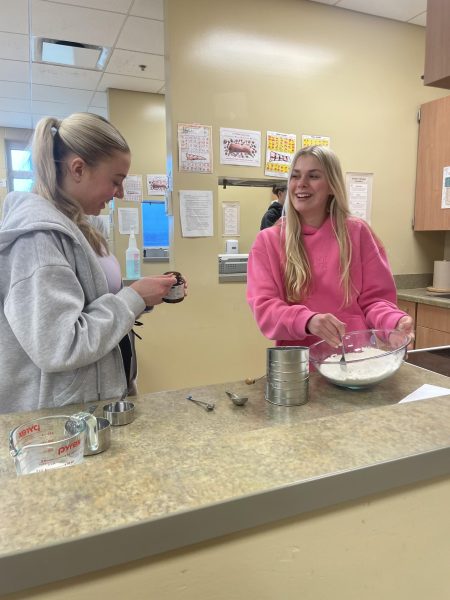Addiction and resolution
January 7, 2019
Ad·dic·tion (noun)- the act or condition of being addicted to a particular substance, thing, or activity. It can come in countless forms and bring about varying connotations to different people. However one thing is for sure: addiction in high school is more prominent than ever.
Almost every teenager has a dependency on some substance, thing or activity. Whether it’s a gym junkie that needs to workout at least twice a day or a nervous wreck that bites their nails, everyone has something. Of course, addictions can be healthy and good to a certain extent, however, too much of a good thing can be very, very bad.
People are starting to abuse substances at even younger ages.9 out of 10 who abuse substances began using these drugs before they were 18. By starting early, teenagers are putting themselves at risk for more and more addiction problems later on in their future.
Addiction is a disease according to most medical associations like the American Medical Association and the American Society of Addiction Medicine. Like any other disease, addiction is a result of a combination of behavioral, environmental, and biological factors. Genetics also play in about half of the risk for addiction.
Although sometimes taken lightly, addiction can be a chronic disease. About 25-50% of people with a substance abuse problem appear to have a severe, chronic problem. Every single addiction can be cured with treatment and even help from family and friends.
The definition and understanding of addiction can be confusing. For instance, many people view addiction as a choice and something that can be easily fixed with enough will power. Although perseverance is a factor in quitting, the biggest way to stop an addiction is to prevent it from ever happening.
The main question is, why do teenagers fall back on substance abuse in their early ages of adulthood in the first place? A main cause of addiction is the number of life changes teenagers go through in that time of their lives. Not only are bodily changes occurring, but friend, family, and school are all things that are very hard to adapt to with hormones flying through a person’s body.
Environmental influences also have a huge toll on progressing an addiction among teenagers. These people, mostly between 14-18, are being exposed to many new mature experiences and may fall under to addiction pressure. Teenagers suddenly see the world as it truly is, noticing different types of trauma, pop culture references, or even notice family members struggling with addiction themselves.
So, it is not totally out of the blue why many teenagers give into certain substances and then later suffer from extreme addiction problems.
However, with knowing why teenagers and just people in general becoming dependent on something, hopefully addiction can be understood for the disease it truly is and not just some internal pleasure that can be cured in the blink of an eye.
Addiction is a recurring issue in high schools and continues to grow. With understanding the true meaning of addiction, society may be able to put an end to underage substance abuse.
(All facts and statistic courtesy of Center on Addiction)












